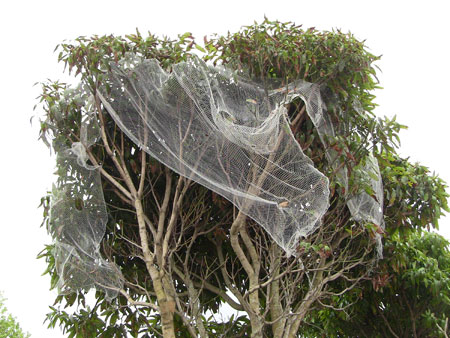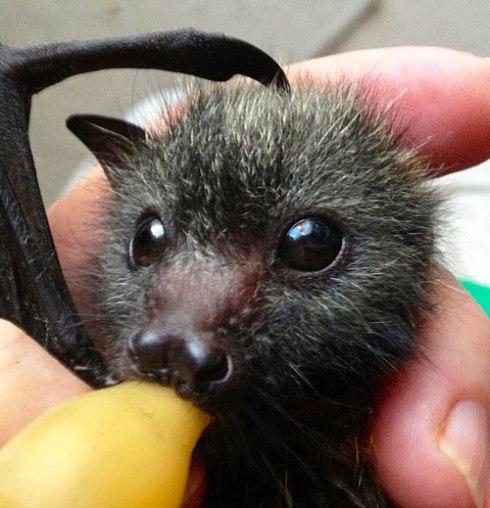You are currently browsing the tag archive for the ‘wildlife-friendly netting’ tag.
Tag Archive
Netting is causing injury to wildlife in Marrickville
February 14, 2014 in Urban wildlife | Tags: baby flying fox, bats and fruit trees, biodiversity, netting fruit trees, Sydney Wildlife, urban wildlife, wildlife injuries in Marrickville, wildlife-friendly netting, WIRES | 1 comment

This is an extreme example of poor netting technique. It’s easy to see how wildlife can become entangled in this.

‘Waif’ – a baby flying fox in the care of WIRES at the moment. Look how small. Photo by Megan Churches with thanks 🙂
Unfortunately WIRES, Sydney Wildlife & the RSPCA have all contacted Marrickville Council about the large number of wildlife rescues they have needed to do in Marrickville LGA because residents have been using netting in their gardens that is dangerous to wildlife or not correctly installing netting.
Flying foxes, microbats, birds, possums, snakes & lizards – any wildlife can easily get caught in netting. The nylon cuts deeply into their body causing severe pain. The more they panic, the more injuries they sustain.
They cannot free themselves if just left alone. Instead, they slowly starve to death. Having distressed wildlife wrapped up in the netting over your fruit tree can be a very distressing experience.
Flying foxes caught in netting are often mothers who have gone searching for food for their babies who they left back at the colony. When the mother does not return, the baby slowly starves to death.
All this dreadful suffering is totally preventable.
Fruit trees can still be covered in netting by using wildlife-friendly netting. Netting used in the garden should look like fly screen. It should also be white, so the wildlife can see it. Never use black netting.
If a child’s finger can fit through any of the holes of the netting, then it is dangerous to wildlife. It is important to tie or fix netting at the bottom & not leave it draped over the tree or with the edges hanging.
Never attempt to release netting entangled wildlife. You will only be putting yourself at risk of being bitten by a frightened animal likely to be experiencing severe pain. Not knowing how to properly remove them can result in much greater injuries for the wildlife, as well as put you in hospital. Bites can lead to loss of a finger or two. Wildlife rescuers are trained in how to safely remove entangled birds or bats & will take the bird/animal to the vet for assessment & provide care if it can be rehabilitated.
If you see any wildlife that needs help contact –
- Sydney Wildlife: 02 9413 4300 (24 hours) or
- WIRES anywhere in NSW: 1300 094 737.
You can read more about wildlife friendly netting & how to properly net fruit trees & use netting in your garden here – http://bit.ly/1iU04dq


Recent Comments